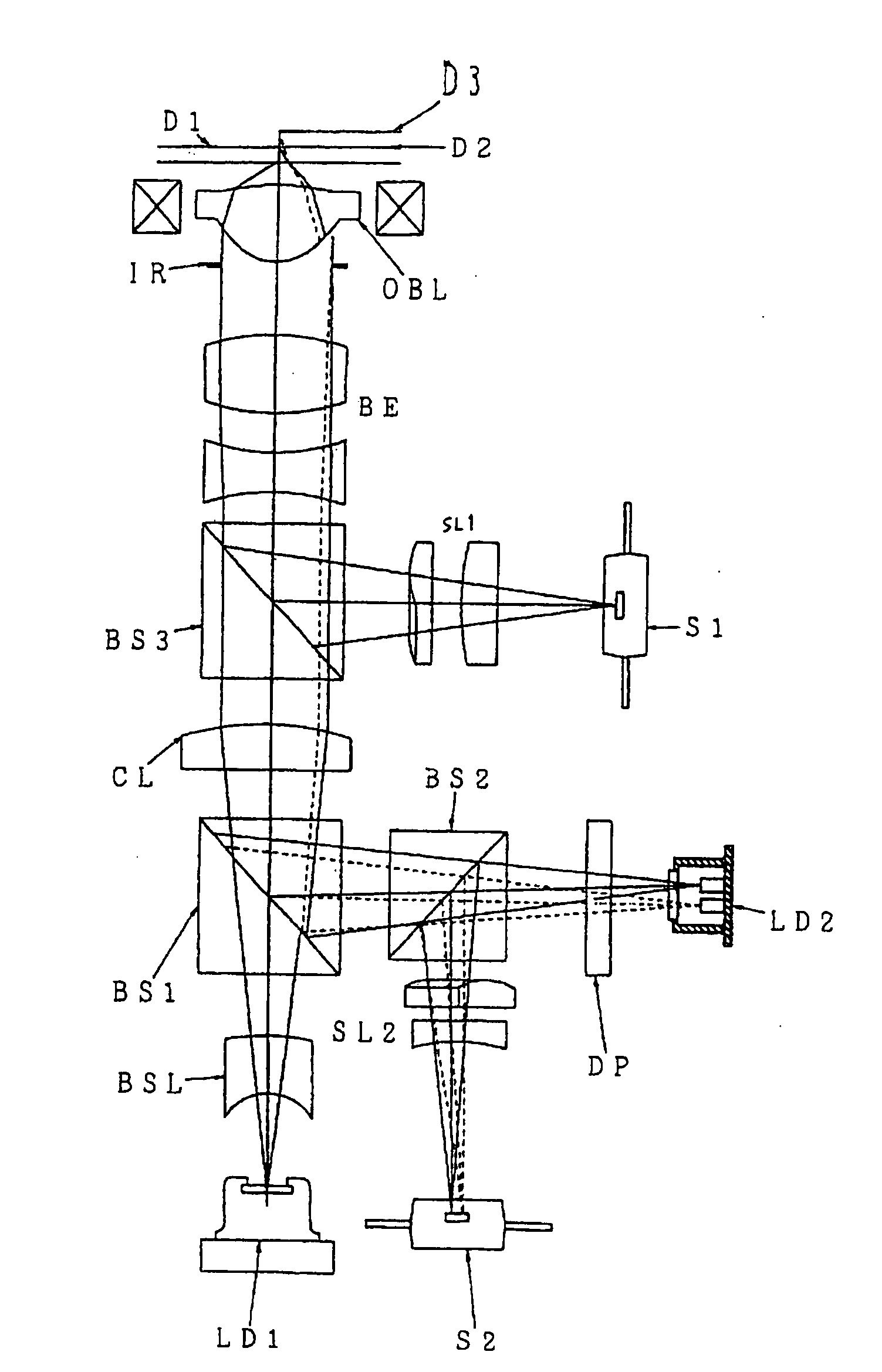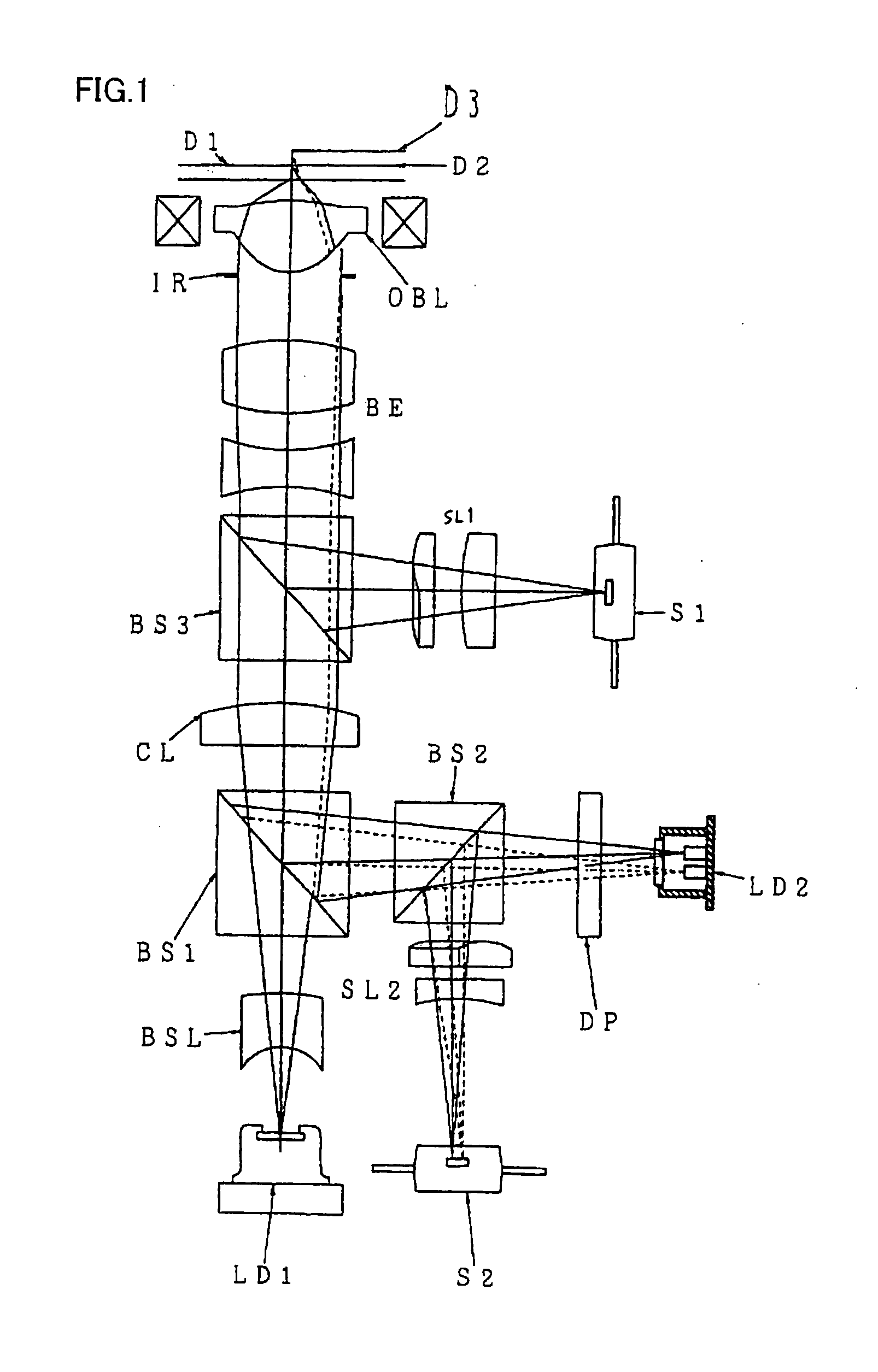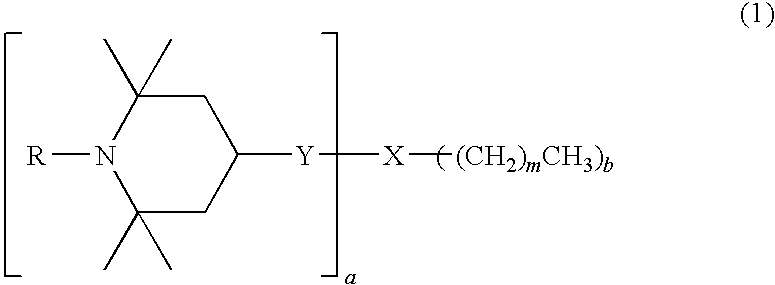Resin composition and optical component
a technology of applied in the field of resin composition and optical component, to achieve the effects of reducing light transmittance, reducing birefringence, and maintaining moldability
- Summary
- Abstract
- Description
- Claims
- Application Information
AI Technical Summary
Benefits of technology
Problems solved by technology
Method used
Image
Examples
synthesis example 1
Synthesis of Compound Represented by Formula [9]
[0272]
[0273]600 ml of a 1,3-dimethyl-2-imidazolidinone (DMI) solution of 14.5 g of N,N-bis(3-aminopropyl)methylamine, 105.1 g of 2-chloro-4,6-bis(N-(2,2,6,6-tetramethylpiperidin-4-yl)butylamino)-1,3,5-triazine, and 30.4 g of potassium carbonate was stirred at 100° C. for 17 hours. 1.7 g of N,N-bis(3-aminopropyl)methylamine was further added thereto, and the mixed solution was stirred at 100° C. for 12 hours. After standing to cool to room temperature, the mixed solution was added with 500 ml of water, and extracted with 700 ml of ethyl acetate. The organic layer was separated from the solution, washed twice with 500 ml of water, and once with 50 ml of saturated saline, and dried over anhydrous magnesium sulfate. After distilling off the solvent, the concentrated residue was purified by silica gel column chromatography to obtain 75.2 g of a target compound as a white solid.
[0274]1H NMR (CDCl3): δ=0.89-0.98 (12H, m), 1.05-1.43 (62H, m), ...
synthesis example 2
Synthesis of Compound Represented by Formula [10]
[0277]
[0278](1) Synthesis of N,N-bis(2-cyanoethyl)hexylamine
[0279]20.1 g of acrylonitrile was added dropwise to an aqueous solution (150 ml) of 15.5 g of hexylamine at room temperature over 0.5 hours, and then the mixed solution was stirred at 70° C. for 3 hours. After standing to cool to room temperature, the mixed solution was extracted with 150 ml of ethyl acetate. The organic layer was separated from the solution, dried over anhydrous magnesium sulfate, and distilled off the solvent to obtain 31.4 g of a target compound as a colorless oily product.
[0280]1H NMR (CDCl3): δ=0.89 (3H, t, J=6.5 Hz), 1.23-1.35 (6H, m), 1.35-1.50 (2H, m), 2.38-2.55 (6H, m), 2.86 (4H, t, 6.8 Hz)
[0281](2) Synthesis of N,N-bis(3-aminopropyl)hexylamine
[0282]31.0 g of N,N-bis(2-cyanoethyl)hexylamine, 4.65 g of RaneyCo, 150 ml of 1,4-dioxane was charged to an autoclave, and hydrogen addition reaction was carried out by supplying hydrogen at an initial pressure...
synthesis example 3
Synthesis of Compound Represented by Formula [11]
[0290]
[0291](1) Synthesis of N,N-bis(2-cyanoethyl)dodecylamine
[0292]39.8 g of acrylonitrile was added dropwise to an ethanol solution (150 ml) of 27.8 g of 1-aminodecane at room temperature over 0.5 hours, 22.5 g of acetic acid was added dropwise thereto over 0.5 hours, and then stirred at 77° C. for 10 hours. After standing to cool to room temperature, the mixed solution was added with 150 ml of water and 22.8 g of 28% ammonia water, and extracted with 330 ml of ethyl acetate. The organic layer was separated from the solution, washed twice with 100 ml of water and 50 ml of saturated saline, dried over anhydrous magnesium sulfate. After distilling off the solvent, the concentrated residue was purified by silica gel column chromatography to obtain 39.7 g of a target compound as a white solid.
[0293]1H NMR (CDCl3): δ=0.90 (3H, t, J=6.5 Hz), 1.21-1.32 (18H, m), 1.32-1.51 (2H, m), 2.52-2.59 (6H, m), 2.82 (4H, t, 6.5 Hz)
[0294](2) Synthesis ...
PUM
| Property | Measurement | Unit |
|---|---|---|
| wavelength | aaaaa | aaaaa |
| wavelength | aaaaa | aaaaa |
| wavelength | aaaaa | aaaaa |
Abstract
Description
Claims
Application Information
 Login to View More
Login to View More - R&D
- Intellectual Property
- Life Sciences
- Materials
- Tech Scout
- Unparalleled Data Quality
- Higher Quality Content
- 60% Fewer Hallucinations
Browse by: Latest US Patents, China's latest patents, Technical Efficacy Thesaurus, Application Domain, Technology Topic, Popular Technical Reports.
© 2025 PatSnap. All rights reserved.Legal|Privacy policy|Modern Slavery Act Transparency Statement|Sitemap|About US| Contact US: help@patsnap.com



